Ever since French colonials created Jackson Square in the early eighteenth century as the Place d’Armes, it has been the historical heart of New Orleans and the French Quarter in particular.
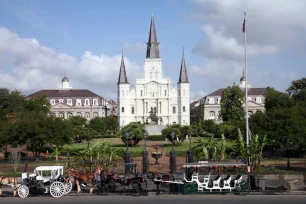
Most of the original buildings from the French period were destroyed by the Great Fires of 1788 and 1794 and the square is now lined with historic buildings erected under Spanish rule.
Place d’Armes
In the early French colony, the square was known as the Place d’Armes (parade ground). At the time, it wasn’t much more than a muddy field used mainly for military drills and executions. Public meetings often took place here, and large festivities were also held at the square.
Baroness Pontalba
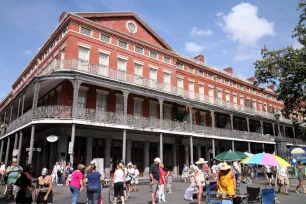
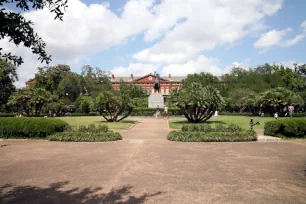
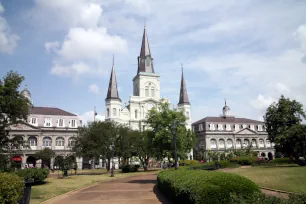
The current appearance of the square can be attributed to Baroness Pontalba, who, in 1850, initiated a beautification project which resulted in the creation of a landscaped garden laid out with pathways, trees and lawns with benches, all arranged around a central statue of general Andrew Jackson. She also instructed the Pelanne brothers, local blacksmiths, to create the wrought-iron fence that still encloses the garden.
Pontalba’s father, Don Andres Almonaster y Rojas, was one of the wealthiest people in New Orleans and also contributed to the development of the square. He provided funds for the construction of the St. Louis Cathedral, an elegant French classicist church building with three spires. He also funded the construction of the two almost identical buildings on either side of the cathedral: the Cabildo and the Presbytere. The Cabildo housed the municipal administration of the Spanish colonial government, and the Presbytere was long used as the city’s courthouse. Both historic buildings now house museums.
Baroness Pontalba followed in her father’s footsteps and ordered the construction of the Pontalba buildings along St. Ann and St. Peter streets. The red brick apartment buildings with beautiful cast iron balconies were considered some of the most luxurious in the city. One of the apartments on the St. Anne side of Jackson Square houses a museum that gives an insight in life in New Orleans in the nineteenth century.
Statue of General Jackson
Baroness Pontalba also renamed the square – then called the Plaza de Armas – to Jackson Square in honor of general Andrew Jackson, who routed the British army on January 8, 1815, at the Battle of New Orleans.
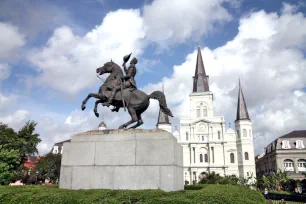
Jackson, who would go on to become the seventh US President, is honored with a bronze equestrian statue created by American sculptor Clark Mills in 1851. The statue, paid for by the baroness herself, shows the general in a heroic pose on a rearing horse.
The inscription on the plinth (The Union must and shall be preserved) was added during the Civil War by Union General Benjamin Butler, who was in charge of the occupied city. Butler was given the nickname ‘Beast’ for his corrupt and cruel leadership, even hanging a citizen for taking down the American flag.
Street entertainment
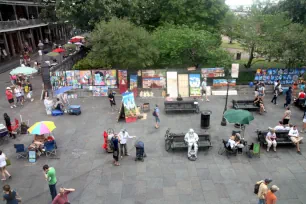
The streets outside the fenced park (St. Peter, Chartres and St. Ann) are all pedestrianized. Here, many artists hang their works on the fence, while others tempt passers-by into having their portrait or caricature drawn. Tarot-card readers, living statues, hot dog vendors and magicians all create a lively atmosphere while jazz musicians entertain the crowds. In front of Jackson Square, along Decatur Street, stand horse-drawn carriages ready to take tourists on a tour through the French Quarter or the Garden District.

